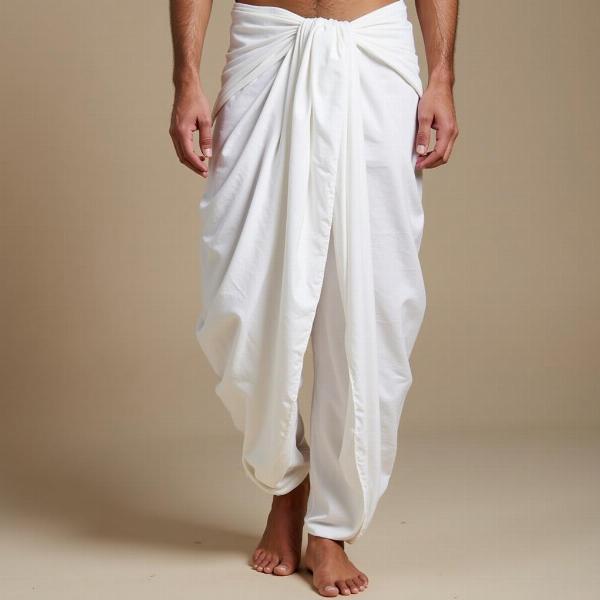Pleating meaning in Hindi revolves around the concept of folding fabric in a decorative or functional manner. Understanding the nuances of pleating, its various types, and its significance in Indian culture can be insightful, especially when dealing with translations related to fashion, textiles, or even religious practices. This article delves into the meaning of pleating in Hindi, exploring its cultural relevance and practical applications.
Exploring the Hindi Terms for Pleating
Several Hindi words capture the essence of pleating, depending on the specific type and context. Common terms include shikan, chunan, and bali. Shikan often refers to general pleating or wrinkles, while chunan might describe the gathering of fabric. Bali specifically denotes pleats, often seen in traditional garments. Understanding these nuances is crucial for accurate translation and interpretation.
What does shikan mean in Hindi?
Shikan generally translates to “wrinkle” or “crease,” but can also encompass the broader concept of pleating. It often implies a less structured fold, sometimes even unintentional.
What does chunan imply in the context of pleating?
Chunan suggests the gathering or bunching of fabric, often a precursor to creating more defined pleats. It focuses on the act of bringing the material together.
What about bali? How is it related to pleating?
Bali specifically refers to pleats, especially the structured, often decorative pleats found in traditional Indian attire. It implies a deliberate and carefully crafted fold.
Pleating in Traditional Indian Clothing
Pleats play a significant role in traditional Indian clothing, both functionally and aesthetically. From the elegant sari to the flowing dhoti, pleats add grace, structure, and volume. They also serve practical purposes, allowing for ease of movement and adjustment. The specific type of pleating used often reflects regional variations and cultural significance.
The Significance of Pleats in the Sari
The sari, a quintessential Indian garment, relies heavily on pleating for its drape and elegance. The nivi drape, the most common style, involves neatly pleated folds tucked into the waistband, creating a flowing silhouette. These pleats, often referred to as bali, showcase the craftsmanship and artistry involved in draping a sari.
Pleating in the Dhoti and Lungi
The dhoti and lungi, traditional garments worn by men, also utilize pleating for both function and style. The dhoti involves intricate pleating around the legs, allowing for freedom of movement while maintaining a dignified appearance. Similarly, the lungi, a wrapped garment, often incorporates pleats for comfort and adjustability. For more information on these garments, refer to our articles on dhota meaning in hindi and lunga meaning in hindi.
 Pleated Dhoti
Pleated Dhoti
Types of Pleats and Their Hindi Equivalents
Various types of pleats exist, each with its own distinct characteristics and Hindi terminology. Understanding these variations is crucial for accurate communication and translation. Some common types include knife pleats, box pleats, and accordion pleats.
Knife Pleats in Hindi
Knife pleats, characterized by sharp, folded edges, can be referred to as teekhi bali or patli bali in Hindi, emphasizing their narrow and pointed appearance.
Box Pleats and Their Hindi Translation
Box pleats, formed by two folds facing away from each other, can be termed dabbe wali bali or chaukor bali in Hindi, highlighting their square or box-like shape.
Accordion Pleats in the Hindi Language
Accordion pleats, resembling the folds of an accordion, can be described as harmonica bali or samantar bali in Hindi, emphasizing their parallel and repetitive nature.
Conclusion: Unfolding the Meaning of Pleating in Hindi
Understanding the meaning of pleating in Hindi goes beyond simple translation. It involves appreciating the cultural significance, practical applications, and varied terminology associated with this art form. From the intricate bali of a sari to the functional pleats of a dhoti, pleating remains an integral part of Indian culture and tradition.
FAQ: Pleating in Hindi
-
What is the most common Hindi word for pleats? Bali is the most common and specific term for pleats in Hindi.
-
Are there different types of pleats in Indian clothing? Yes, various types of pleats, like knife pleats, box pleats, and accordion pleats, are used in different garments.
-
What is the significance of pleats in a sari? Pleats are essential for draping a sari correctly and contribute to its graceful appearance.
-
Do men’s garments also feature pleats? Yes, garments like the dhoti and lungi incorporate pleats for both functionality and style.
-
Where can I find more information about Indian clothing? You can find more information on our website Meaning-Hindi.in, which offers articles on topics like dhota meaning in hindi and lunga meaning in hindi.
Need Professional Hindi Translation Services?
Meaning-Hindi.in specializes in providing high-quality Hindi translation services for various domains, including business, legal, technical, website localization, and educational documents. We offer accurate and culturally sensitive translations, ensuring your message resonates effectively with your target audience. For all your Hindi translation needs, contact us at [email protected] or call us at +91 11-4502-7584. Meaning-Hindi.in is your trusted partner for bridging the language gap.